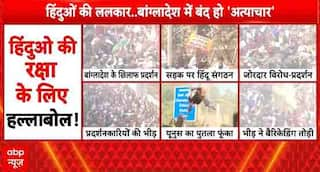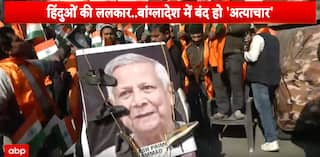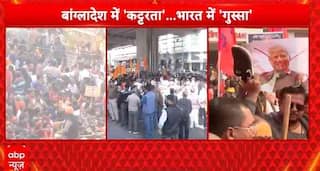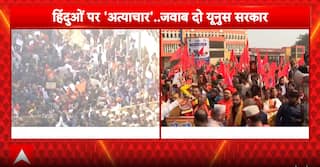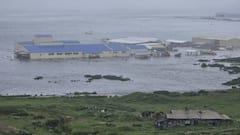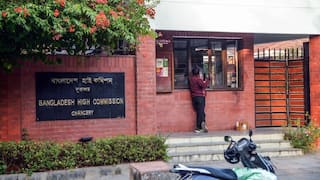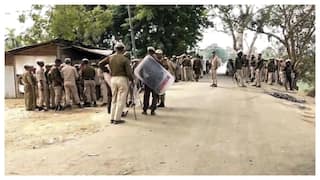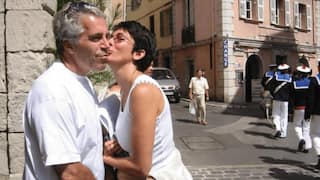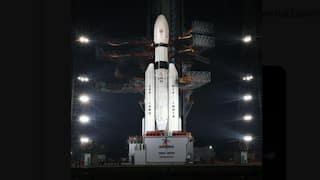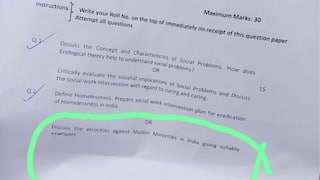Hawaii Volcano Eruption: History Of Mauna Loa That Has Erupted After 38 Years
Mauna Loa is one of the five volcanoes that make up the Big Island, which is the southernmost island in the Hawaiian archipelago. It last erupted in 1984.

The Mauna Loa volcano in the US state of Hawaii is erupting for the first time in nearly 40 years, and authorities have asked people living near the world’s largest active volcano to stay prepared for evacuation in the event of a worst-case scenario, news agency AP reported.
The eruption began late Sunday following a series of “fairly large earthquakes”, the report said, quoting Ken Hon, scientist-in-charge at the Hawaiian Volcano Observatory.
According to the report, the eruption was not immediately endangering towns in the vicinity but the US Geological Survey has warned people living on Hawaii’s Big Island that an eruption “can be very dynamic, and the location and advance of lava flows can change rapidly”. Roughly 200,000 people live on the island. They have been told to be ready to evacuate if the lava starts flowing toward homes and communities.
Officials have also asked the residents to stay away from the areas — the volcano’s summit crater and vents along the volcano’s northeast flank — where lava was emerging, though they are far from populated areas.
The lava, according to the AP report, is shooting 100 to 200 feet into the air out of three separate fissures that are estimated to be 1.6 to 3.2 km long.
Also harmful are the volcanic gases, primarily sulphur dioxide, emanating out of the vents.
Quoting Dr Libby Char, director of the state Department of Health, the report said air quality on the Big Island is good right now but officials are monitoring it carefully.
The eruption is likely to last about one or two weeks according to historical patterns.
The air quality could deteriorate while the eruption lasts, Hon said.
#MaunaLoa is erupting from vents on the Northeast Rift zone. Flows are moving downslope to the north. USGS Photos from Civil Air Patrol fight. #MaunaLoaErupts @Volcanoes_NPS @Hawaii_EMA @CivilDefenseHI pic.twitter.com/kUYWYPdk4L
— USGS Volcanoes🌋 (@USGSVolcanoes) November 28, 2022
First Eruption Of Mauna Loa Since 1984
The Big Island has seen its population more than double from 92,000 in 1980, and hence the Mauna Loa eruption is a new experience for many locals.
While most of the people live either in Kailua-Kona city to the west of the volcano, or Hilo to the east, officials were most worried about the subdivisions located some 50 km to the volcano’s south where about 5,000 people live, the AP report said.
Lava from the volcano could move toward Hilo, the Big Island’s most populous town with a population of nearly 45,000, but that could take about a week, Hon was quoted as saying at a news conference.
According to the report, scientists are hoping the lava flow would parallel the 1984 eruption, when it was more viscous and slowed down.
Meanwhile, the Hawaii County Civil Defense has opened shelters for the people who started evacuating on their own initiative.
People were already on alert after a recent spike in earthquakes at the summit of the volcano, sending signals that it could erupt.
In October, scientists had said an eruption wasn’t imminent, though they were on alert.
History Of Mauna Loa
The Big Island, which is the southernmost island in the Hawaiian archipelago, is made up of five volcanoes and Mauna Loa is one of them.
At 13,679 feet above sea level, Mauna Loa is much larger than neighbouring Kilauea volcano, which erupted in a residential area in 2018 and destroyed 700 homes, according to reports. What makes Mauna Loa more dangerous is its steeper slopes that enables hot lava to flow much faster.
When the volcano erupted in 1950, the lava travelled 24 km to the ocean in under three hours, it was reported.
The volume of Mauna Loa is estimated to be at least 75,000 square km.
Since 1843, Mauna Loa has erupted 33 times.
Frank Trusdell, research geologist at the Hawaiian Volcano Observatory, told AP all of Mauna Loa eruptions in recorded history started in its summit crater. Lava erupting from the summit usually does not travel far enough.
In 1984, during the last eruption, lava flowed down its eastern flank only to stop 7.2 km short of Hilo.
Mauna Loa is also known for releasing huge volumes of lava.
In 1950, when the eruption lasted for 23 days, it discharged 1,000 cubic metres of lava per second. Kilauea, in contrast, released only 300 cubic metre per second when it erupted in 2018.
While Mauna Loa erupted this time within a month of the rumblings being recorded, this was not the case in 1975 when increased seismic activity lasted for a year before the volcano actually erupted. In 1984, the eruption happened a year-and-a-half after the temblors started to draw attention.











